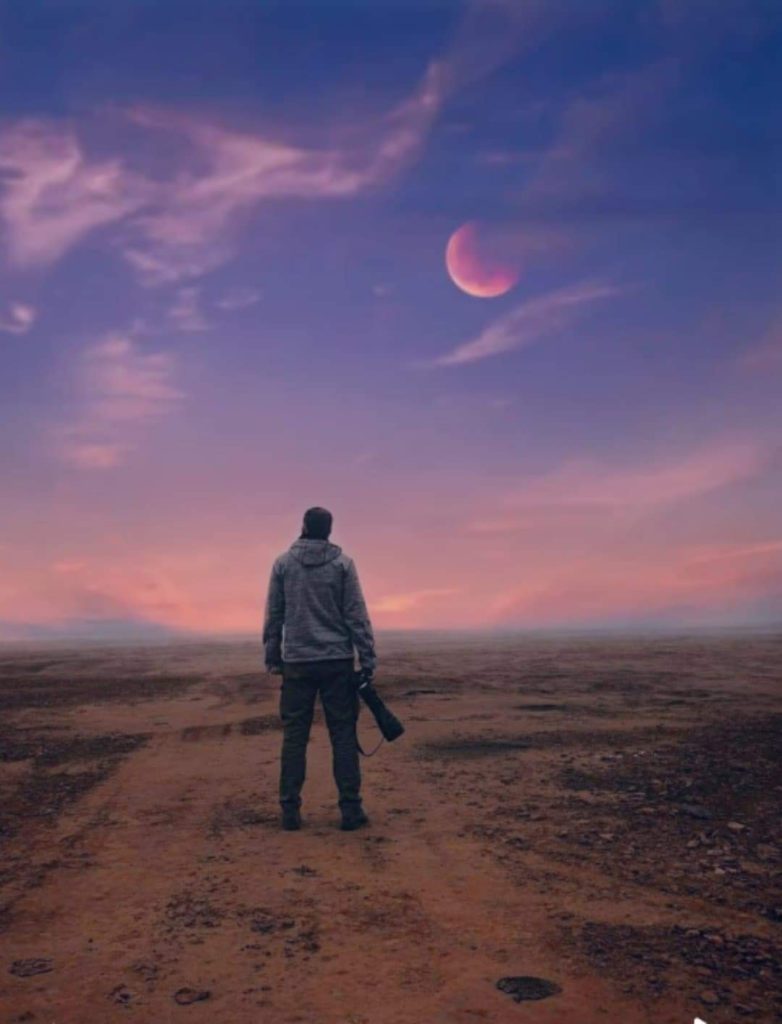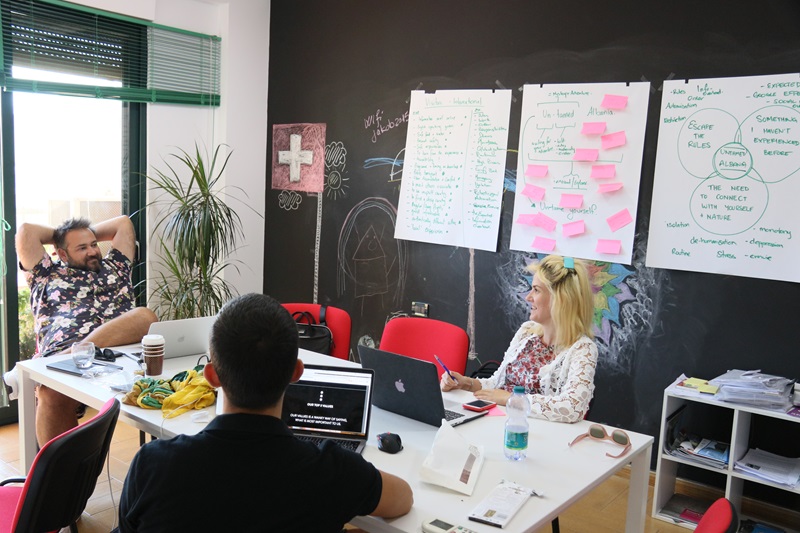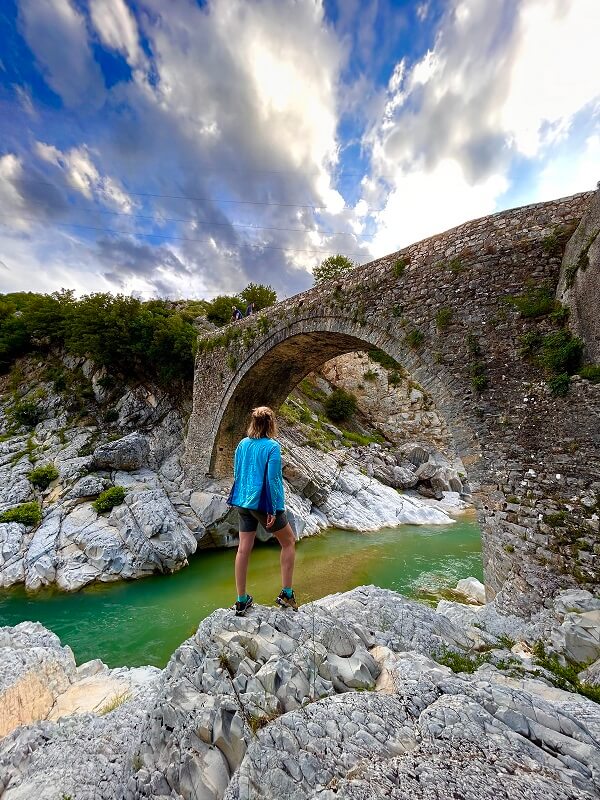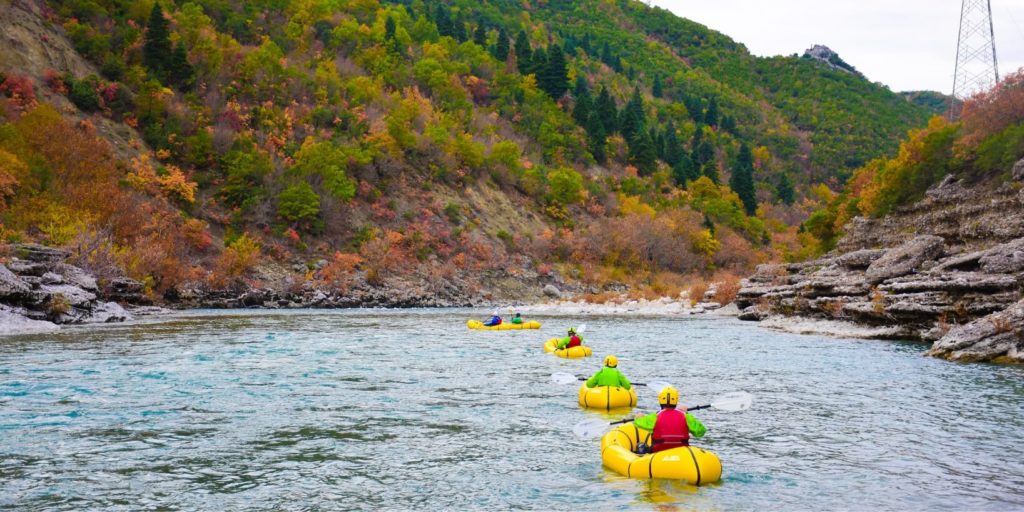What's like to be the wildlife photographer -Arian Mavriqi
* This article was made possible by the support of USAID, Economic Development, Governance and Enterprise Growth Project
Arian Mavriqi is one of the most famous photographers and explorers of
nature and fauna in Kosovo and in the region. He is a journalist in the TV in
Kosovo, RTK, directing the program “Wildlife with Arian Mavriqi”. In the
following interview, Arian shares his experiences and advices:
- How to become a successful wildlife photographer?
- What we owe to nature?
- Why visit Kosovo and Albania?
When did you first realise you wanted to be a photographer and how did you follow your dream?
I have worked about six years as a journalist. Immediately after the war, in a radio – station that was financed by American KFOR here in Kosovo.
Then, I switched to a German nongovernmental organization which had in aim the improvement of the international rapports between Albanians, Serbians and and… That project came to an end on April 2013. Everything was closed because there were no more problems, organizations like the one I’ve worked on, found as unnecessary staying more in Kosovo, because the problems were solved so they were placed in other countries where the problems occurred, like Iraq, Afghanistan, Sudan etc.
That was the mission of the organisation. I was jobless. That I went back to my passion, once I loved it, like watching nature, walking into nature. To be sincere when I was a child in school I was looking for the end the class day so I could go in the nature to search and find the most interesting thing about nature. I wanted to document everything but unfortunately in the beginnings I didn’t have the technical means to take pictures.
I started with a mobile phone Samsung Galaxy S4 and did some “macro” pictures to show some details of flowers, insects, any portrait. I understood how much I was missing taking pictures. I invested in this direction. Firstly I bought a photo camera. My biggest desire is to make shootings of migratory birds.
But I could document them only with a more longer camera lens. I bought it and I started to publish on the social media photos especially of birds. There I understood that our people here in Kosovo do not even have any idea for the presence of these birds in our land. As you may know in difference from Albania we in Kosovo have been in war. Since 1999, on our liberation, governments, directories, people had other worries.
They faced with the beginning of a new life, creating new institutions. Maybe they didn’t have enough time to take care of documenting the fauna in Kosovo. When I realised there was no information or just a few, I started to reflect the presence of of this kind of birds especially. The people were supporting me unconditionally. They were amazed on how these kinds were present in Kosovo and no one knew about it before. I insisted explaining that maybe you didn’t know but it doesn’t mean they have not been here. There have been lacking an initiative from somebody to bring footage.
You know Blerina that they say a photo means a thousands words. Its totally different when you see a creature in photo from when someone explains it to you for days in words. This is how I started. I continued. I had support. After there was other friends who joined me. And here we are today with a big organisation named Wild Life Albanian Photographers.
Arian Mavriqi

What inspires you toward the wildlife photography? Why you decided in particular to be a wild life photographer?
Communication with these creatures through the photography has inspired me, because they have a very interesting life.
Through photography we tell a lot, the way they are fed, about nesting time, their colours and how do they look when you watch close, how do they live. It’s strange the life cycle that have birds and animals but especially birds, because mostly we shoot birds.
Believe me that people have the minimal information on how is the life of a bird from egg hatching until it flies. It passes a lot of challenges. It is not just like going out and flying. It is very strange how that process has been made. Imagine that the mother enters for hundreds time in the nest to bring food, insects to her five birds.
You wonder where does she gets the food. Or you get inspired from that moment that you couldn’t believe can happen. For example the white stork throws down the weakest stork that hatches from the egg. Watching this you are terrified. You think how is that possible? But this is their life and these are the secrets they keep with them. A lot of other things. So we did for the very first time to bring a video shooting of the Buteo eagle feeding its young. It has been an exclusive in all Albanian lands.
Ciconia Nigra, Gjilan, Kosovo – Photo by Arian Mavriqi
What are the difficulties a wildlife photographer faces on a regular basis?
Unfortunately we face a lot of difficulties. We do not have a big institutional support. All the shooting that we do we have realised with our means that we have in disposal like photo camera, go pro that are a private asset of each of us.
It is not easy because in reality shootings like these our colleagues in the National Geographic make in a more easier way, with better cameras. They do not need to risk their lives how it happens with us. We climbed an oak 25 m or we went to some dangerous hills to go and mount the cameras. Then shooting the most venomous snake in Europe which was Vipera Ammodytes it has its own risks.
So we just don’t have the right conditions, since we are not financed from someone. There are no places where we can sleep, because some times you cannot catch the photography if you don’t wait for 2-3 days. We do not have cars to go in difficult terrains. We use our own cars. Many other challenges and problems that we face ordinarily. We hope that our institutions to be self-aware and understand that a wild life photographer needs a support at least with technical means, more sophisticated so we can be one step ahead of time.
We never asked for money or bonuses. We just have asked for technical tools for photography. With this passion we have, we can provide unseen footages like in the first documentary realised in the Albanian lands.
Forest Owls – Photo by Arian Mavriqi
It was an amazing documentary actually, which surprised us in every second. The time was flying while watching it. It was more than 40 min but it seemed as a while due to the impressive footages. What is your favourite photo. Can you share with us the story behind it?
It was the shoot of the photo of Pandion Haliaetus, the eagle I mentioned before because it has not been identified in the governmental datas. At the moment that I shoot the photo in the lake of Badovci, in Pristina, I didn’t knew what creature it was about. I posted it on the internet. Actually Blerina we are not ornithologists, we don’t recognise at 100% the birds, even though we are well informed and know we are quite good with the denominations. A colleague of mine, Fatos Lajçi from Peja, comments and tells me that the creature I shot has never been identified in the governmental datas. It is an exclusivity for Kosovo, since actually in Albania exists. It is a passerby, does nest in Kosovo and unfortunately even not in Albania. Imagine the fortune to be there at the right moment, to catch a creature it was unknown before. I was so happy. I shared those photos with all nature enthusiasts on facebook. Then a lot of portals, tv came to have my interviews to talk about this. So this is my favourite photography till now. I cannot say what it will happen in the future.
Wildlife in Kamenica, Kosovo – Photo by Arian Mavriqi
The epic mountains of Kosovo, we guess, hide a wild fauna. Which is your favourite animal?
Vipera ammodytes – Photo by Arian Mavriqi
We have followed your profile in the social media but as well the fantastic videos on youtube. We know you are a perfectionist. Do you have any advice for all the young people who want to become wild life photographers?
I want to mention something else I forgot to tell, if you allow me Blerina. In my filming with trap cameras there are 5 wolves. For our surprise one of them is white. Even today we cannot understand why the white wolf is in the middle of them. I communicated with people who have knowledge on this regard and this has been special. On my youtube channel you can find that video. You’re going to be amazed of the view. Unfortunately it is done by night. But you can see this very special video in how wolves look for the very first time provided by an Albanian.
Squirrel in Kamenica, Kosovo – Photo by Arian Mavriqi
What advices do you have for young people who maybe aspire to become wild life photographers?
Firstly you should love fauna and understand the importance of the biodiversity. Otherwise don’t go just to just with the purpose to make a photo, our with the idea to become a wildlife photographer because it is fancy.
You must love the fauna, otherwise you can cause a lot of damages. For example you might put a camera close to a nest, and make the mother to go away forever from there and not come back ever again. Or you might go on terrain where you can disturb birds, different animals and you can make more damages than create value.
You should be aware that if you want to make a National Geographic kind of photography you should spent a lot of hours into nature, in winter, in the middle of the cold, under the rain, in the snow. It is not that the animal will come in your garden to say “here I am, catch me”. No, you should go always after them, search for them. It is not easy, but never give up.
Communicate with other photographers who have more experience, get informations, advices. They will help a lot. Unfortunately we didn’t have such opportunities. There didn’t exist such photographers before. But now, if you enter in our group Wild Life Albanian Photographers you can realise that there are a lot of photographers who share advices. In the program of our organization, since we are a common registered organization now Albania – Kosovo, which is based in the Kamenica town, we had a 20 video serials.
There have been invited 20 different photographers, of different styles, who have shared their versions and help how to make a picture. Is is an awesome opportunity to learn about photography. We are always in disposal at 200% to give information at any time you ask about a creature, without any hesitation. We do not want to keep this only for ourselves but we want to share with everyone who wants to be involved with photography.
Radoniqi Lake, Gjakova, Kosovo – Photo by Arian Mavriqi
What do you love most about your job as a wildlife photographer?
I love the most when after waiting for several hours I get the results. It’s such a pleasure because many times it happens to be despaired with out results. Unfortunately I had such a desperation even today, but it never stops us. We were in a terrain where we wanted to shoot a bird named Upupa Epops – Pupëza.
It is a brid who has many characteristics, starting from her beautiful look. It is the most beautiful migratory bird in Europe. A very particular think of this bird is that it is mentioned as well in the holy book of the Qur’an, which makes us even more curious to know more about this bird.
We were there to monitor in some places where we have doubt there were these birds and than to take some footages but we weren’t lucky enough to find them, even though we still have doubts. We have a footage realised two years ago in Kosovo, also this is an exclusivity in all Albanian territories, but the position of the nest was the best possible. So we do not stop with this. We want to bring it with a higher quality. So people can watch the real spectacular views of a couple of Upupa Epops while they feed their birds.
Upupa Epops – Photo by Arian Mavriqi
So curiosity and passion build patience as well?!
Always. You cannot do anything without patience in this kind of photography.
What is the most favourite place in the world you’d love to visit or that you’ve visited to shot wildlife?
I’ve visited a city in Europe where I saw there are opportunities for wild life photography and that I would love to visit again, due to some very nice creatures they have, especially of predators is London. It is a west place I loved very much. I’d love to visit again. Like a big European city is very different from ours.
For example you can find the fox everywhere in the city. In the middle of the people you can shoot great photographies of it. But also some of predators are quite good. I’d love to go back again. I went for the purpose of a photography exhibition that we presented as Wild Life Albanian Photographers. I went there with my wife. We spent a great time.
Of course that my dream is to visit once the most favourite place in the world of wild animals, you cannot see everywhere, in our Albanian territory. I want to do a safari and watch the wild animals like lions, giraffes or elephants and many other creatures I haven’t seen. I hope we will be one day there. We’ve tries to find the best way possible for a group of photographers from Kosovo and Albania to go there. But unfortunately Blerina is very expensive. It is not something you can easy reach.
At the present moment the fee is not affordable for us. We will look after opportunities if an organization will fund our trip. Maybe our institutions. I do not know. It would be a pleasure that Albanian photographers as well can bring photos from those wild places. There is the opportunity to shoot photographies that you can realise once in a lifetime.
Curly Pelican – Photo by Arian Mavriqi
I’m quite sure it will happen soon, because passion and tireless work can open all gates. It may be a little late, since all of us have such experiences in our activities, but anyway I believe there will be a lot of people or organisations who would be ready as soon as the situation turns normal again, to create the possibility that also Albanian photographers leave their trace in the photography of world wildlife. What about the Albanian territory? What is your favourite place to shoot photography?
I’ve visited many places but to be sincere what touches mostly my heart is Divjaka Karavasta in Albania. There I have wonderful friends, people which I highly appreciate with all my heart. Alketa dhe Altin are a couple who live in Divjaka and help us always. A huge respect deserves the director of the park Ardian who helps us a lot.
There are many other people who help us for the denominations, to find these destinations, to capture them. I say thank you with my whole spirit and heart to the honourable professor Taulant Bino, to Erald, to Mirian and many others who can’t wait for us to be there. So we can go together and visit those places.
Meanwhile in Kosovo I love with all my heart the place where I was born and grown up, the town of Kamenica where I live. It has a very good fauna. It should be better, but with the population awareness things are going better. I hope one day, of course we cannot do Kamenica like Divjake, it is a gift of God for Mother Albania as we say in Kosovo. Also the Narta lagoon is a miracle, Patok valley, Shkodra lake and so on. We are not bad at all Blerina, but we need help, a collaboration among us Albanians in general.
Seagulls in Divjake, Albania – Photo by Arian Mavriqi
You know Albania, Kosovo, Albanians territories from a different corner, that not many people have the luck or curiosity to discover this way. What would you recommend to an international traveller that wants to visit our countries?
Firstly I’d ask to our countries to be more careful on the approach they do to tourists. They should provide better conditions so when they come here they will know where to go. Every foreign tourist first I should tell that you have in front of you a nation that has the biggest heart on Earth and very kind.
People who will never take advantage of you, or by abusing shamefully. It will never happen. I’ve experience with tourists from Russia. I was on Dhermi beach. One of the beaches I love the most in this globe, I admit. For the sake of truth, before they left to Albania, they got messages to be aware because they are going to a place where they will not be welcomed and will abuse with the prices through different fraud. But the tourist told me “ I found a place better that my home and my family” and in reality he was amazed as well from the hospitality I offered.
He visited Albania with his wife and his two sons and told me that I would ever go to some other place. As you may know prices are very good. The same as in Kosovo, as in Albania. There is no difference. With this behave we attract tourist from abroad. They can come here and find a nation that its highest virtue is hospitality and respect of the guests, in this case towards the tourists.
There are good opportunities to visit our natural treasures, which would be worth trillions like the example of Karavasta lagoon, our lakes, our forests, our mountains. We have special guesthouses ready to welcome tourists. We have many rivers you mentioned before to explore through kayaking or something else or just for sightseeing, to watch a miracle created by God. We have great opportunities for birdwatching in these lakes, wetlands, lagoons. We have the most fantastic food in the world. We have it all. So they can feel safe and come because they are in their home and will find hospitality and warmhearted people.
Photo by Arian Mavriqi
It’s true Arian. I want to bring an ancient Albanian phrase “ The house of the Albanians belongs to God and to the Guest”.
I’d like to thank you for giving me the opportunity to listen to one of the most beautiful interviews. I send heartfelt greetings and we can’t wait to watch the documentary but even photos that you share daily on facebook. I hope to meet you soon again in the next exploration on nature, not virtually.
Thank you. It is always a great pleasure.
Arian Mavriqi with his family



